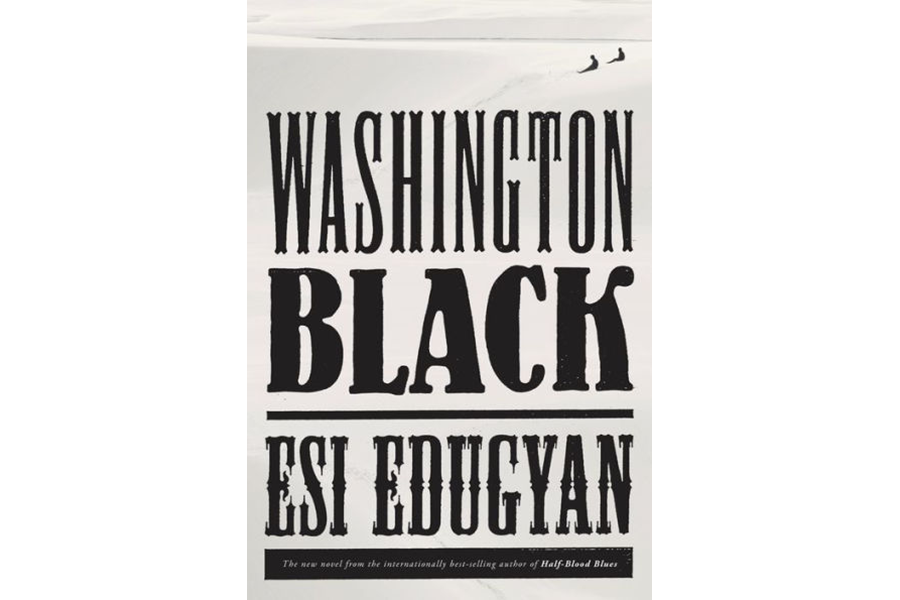'Washington Black' uses the story of a talented young slave to explore identity
Loading...
“Freedom is a word with different meanings to different people,” writes Esi Edugyan in Washington Black.
The third novel by the award-winning Canadian writer of Ghanaian descent, the book tells the tale of a young enslaved boy who escapes from the sugar plantation that is the only home he knows. With a bounty on his head, his master’s brother, a scientist, helps him slip away using his “cloud cutter,” the man’s newly invented flying machine.
The tale reaches over three continents and spans eight years of the early 19th century, a time of scientific explorations and class expectations. Set against societal structures, it explores individuality and asks what really defines us, that which is visible or that which is not?
The story begins on Faith Plantation in Barbados. Owned by a wealthy British family, the land is tended by the older son who resents the responsibility and views it as an exile from London society. When Titch, the younger son, comes to visit, he upends the usual order of the plantation when he enlists a group of his brother’s slaves to assist in his scientific studies, especially the construction of the cloud cutter.
He chooses one young boy – Washington, or “Wash,” as he is known – to be his personal assistant. Though his choice stems from the pragmatic need to find someone of the proper size and weight to provide ballast for his flying machine, Titch discovers in Wash abilities that defy his brother’s assumptions.
Titch teaches Wash to read and provides him with the tools to develop his artistic talent. Yet this seeming effort to recognize Wash’s individuality is fraught with questions about his motives. Is Titch recognizing the boy’s humanity or simply developing ways to make him more useful to him and his scientific experiments? Are his actions supportive or opportunistic?
None of this matters when Titch’s cousin, visiting the plantation on family business, commits suicide and ensnares Wash in the event. Certain that no one will believe the boy’s innocence, Titch and Wash flee the island, slipping away in the flying machine that soon crashes into a passing ship.
Yes, the captain appears to be shady but the vessel delivers the two to America where Titch seeks assistance from a colleague. From there they set off for the frozen Arctic in search of answers to more of Titch’s questions, these related to his family, not science.
During their travels, Titch and Wash make an odd pair. One is the educated son of British elite, the other a scarred boy with a bounty on his head. Yet both struggle with questions about family, identity, and what it means to be free. With all the privilege of his station, Titch yearns to be free from familial entanglements. Wash, of course, views freedom and family very differently.
Presented with the opportunity to escape north via the Underground Railroad, a choice that would separate him from Titch, Wash realizes that he may decide as someone with free will. He chooses to stay with Titch, a decision that pains the older man. Wash stays because he views Titch as “family,” something he has never really known. To choose to remain together is Wash’s sense of freedom.
Through these clashes of perspective, Edugyan illustrates the complexity of identity and explores what defines us. Is it what surrounds us, such as family? Or is it what is inside us? Is Wash’s identity defined by his skin color, by the scars from his days on the plantation? Or is it his intelligence and talent, abilities that he shares more openly with his growing self-awareness?
In her elegant, nuanced writing style, Edugyan unfolds Wash’s experiences as he realizes his freedom. Though still constricted in his movements as he hides his identity from a bounty hunter, Wash experiences liberty as he develops his abilities, an identity that no one can seize.
Throughout the story, Edugyan weaves the quality of artistic talent. Yes, it is an element of Wash’s identity, but it is also the means to create a life when all else shatters. Wash describes it as a way “to create a world with my own hands,” something he does as a young boy but again later when circumstances separate him from Titch.
An early lesson sustains Wash. When first learning to draw, Titch instructed him, “Be faithful to what you see and not what you are supposed to see.”
Is this not the perpetual challenge of identity, to look with a clear eye and see what is truly there and not what we expect to see?








